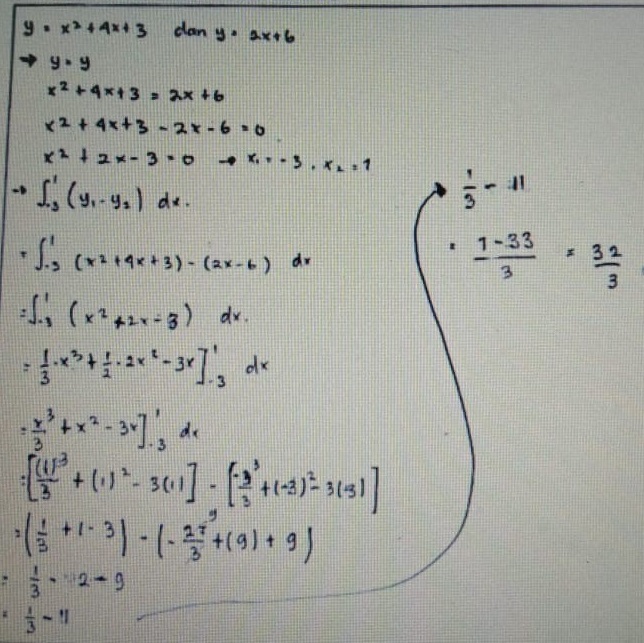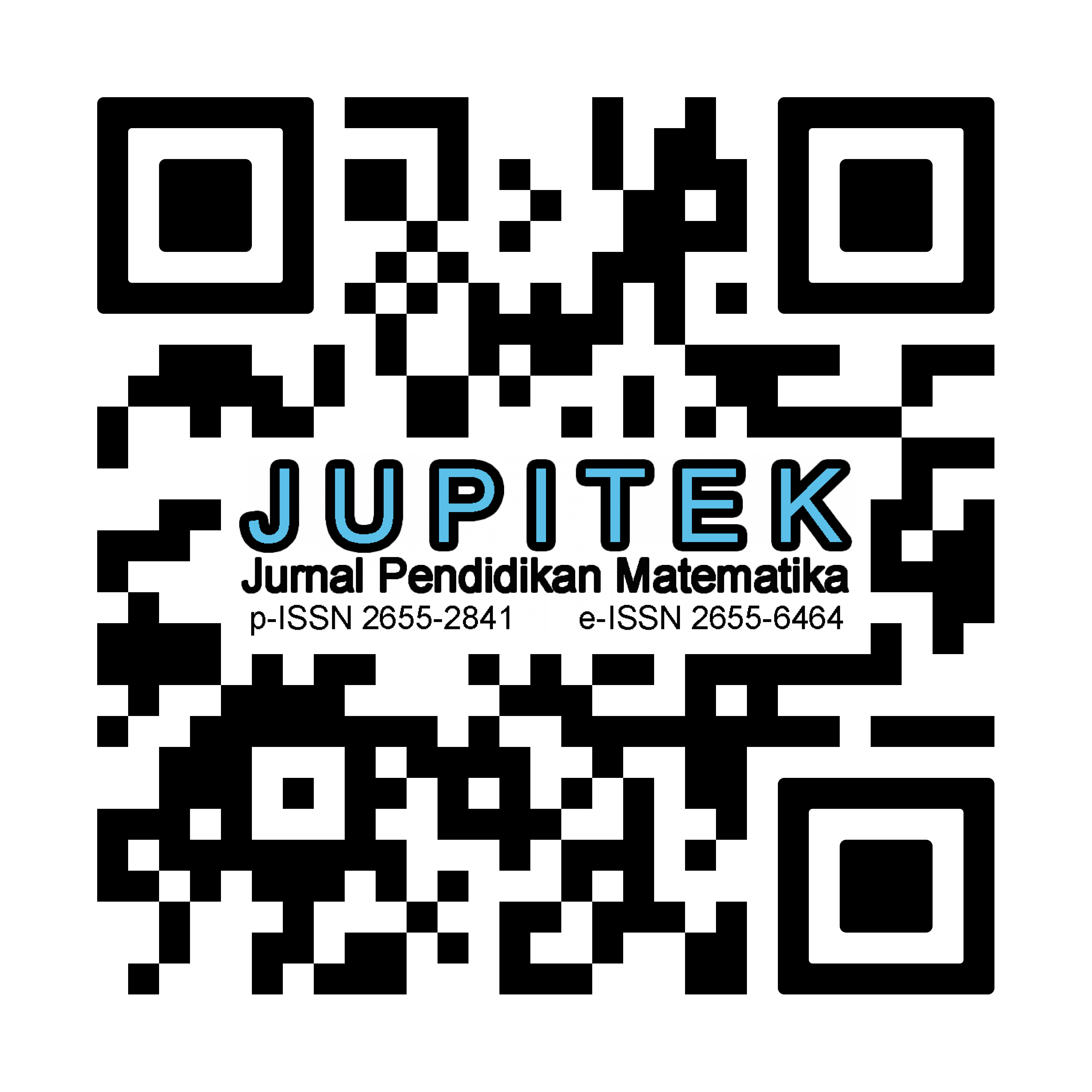MATHEMATICAL REPRESENTATION ABILITY OF MATHEMATICS EDUCATION STUDY PROGRAM STUDENTS
Abstract
This research is descriptive because it aims to describe students' mathematical representation ability. Mathematical representation is related to ways of expressing mathematical ideas. Mathematical representation is divided into verbal, visual/pictorial, and symbolic representations. The subjects of this study were 40 new Mathematics Education study program students. Data were collected using test and interview techniques.
Furthermore, the data were analyzed using descriptive and qualitative statistics. The results showed that only 10% of the students had the mathematical representation ability in the good category, 12.5% in the moderate category, 10% in the poor category, and 67,5% in the very poor category. In detail, for verbal skills, there is 2.5% in the very good category, 7.5% in the good category, 17.5% in the moderate category, 15% in the poor category, and 55% in the very poor category. For the ability of visual/pictorial representation, there is 2.5% in the very good category, 7.5% in the good category, 12.5% in the moderate category, 7.5% in the poor category, and 70% in the very poor category. Furthermore, for the symbolic representation ability, 10% is in a good category, 10% in the moderate category, 7.5% in the poor category, and 72.5% in the very poor category. Based on the classroom observation and interview, the low mathematical representation ability is caused by two main things, namely (1) relatively low prerequisite knowledge and (2) mathematics learning, which is dominated mainly by teachers; learning does not provide opportunities for students to develop mathematical representation skills
Downloads
References
Ahmad, A., Tarmizi, R. A., & Nawawi, M. (2010). Visual representations in mathematical word problem solving among form four students in Malacca. Procedia-Social and Behavioral Sciences, 8, 356-361.
Anwar, R. B., Yuwono, I., As' ari, A. R., & Dwi, R. (2016). Mathematical Representation by Students in Building Relational Understanding on Concepts of Area and Perimeter of Rectangle. Educational Research and Reviews, 11(21), 2002-2008
Bal, A. P. (2014). The examination of representations used by classroom teacher candidates in solving mathematical problems. Educational Sciences: Theory & Practice, 14(6).
Bakar, K. A. (2017). Young children’s representations of addition in problem solving. Creative Education, 8(14), 2232-2242
Creswell, John W. (2014). Penelitian Kualitatif dan Desain Riset. Edisi ke-3. Yogyakarta: Pustaka Pelajar.
Friedlander, A., & Tabach, M. (2001). Promoting multiple representations in algebra. The roles of representation in school mathematics, 173-185.
Loc, Nguyen Phu and Ngo Truc Phuong. (2019). Mathematical Representations: A Study in Solving Mathematical Word Problems at Grade 5 – Vietnam. International Journal of Scientific & Technology Research, 8(10), pp. 1876-1881.
Minarni, A., Napitupulu, E., & Husein, R. (2016). Mathematical understanding and representation ability of public junior high school in North Sumatra. Journal on Mathematics Education, 7(1), 43-56.
NCTM. (2000). NCTM: Principles & Standards for School Mathematics (PSSM). https://www.itws.org/NCTM-PSSM-FocalPoints-CommonCoreStandards.pdf
Ratumanan, T. G., & Matitaputty, C. (2017). Belajar dan Pembelajaran Matematika. Bandung: Alfabeta
Ratumanan, T. G., & Laurens, T. (2016). Analisis Penguasaan Objek Matematika (Kajian pada Lulusan SMA di Provinsi Maluku). Jurnal Pendidikan Matematika Raflesia, 1(2).
Ratumanan, T. G., & Theresia Laurens. (2015). Penilaian Hasil Belajar pada Tingkat Satuan Pendidikan. Yogyakarta: Pensil Komunika.
Ratumanan, T. G., & Ayal, C. S. (2018). Problem Solving Based Learning Model Alternative Model of Developing High Order Thinking. International Journal of Health Medicine and Current Research-Ijhmcr, 3(2), 857-865
Ratumanan, T. G., & Tetelepta, Y. (2019). Analisis Pembelajaran Matematika Berdasarkan Kurikulum 2013 pada SMA Negeri 1 Masohi. Jurnal Magister Pendidikan Matematika (JUMADIKA), 1(1), 25-34
Sabirin, M. (2014). Representasi dalam pembelajaran matematika. Jurnal Pendidikan Matematika, 1(2), 33-44
Villegas, José L., Enrique Castro., & José Gutiérrez. (2009). Representations in problem solving: a case study with optimization problems. Electronic Journal of Research in Educational Psychology. 7(1), pp: 279-308

Copyright (c) 2022 Tanwey Gerson Ratumanan, Carolina Selfisina Ayal, Pieter Z Tupamahu

This work is licensed under a Creative Commons Attribution-NonCommercial-ShareAlike 4.0 International License.
License and Copyright Agreement
By submitting a manuscript to Jurnal Pendidikan Matematika (JUPITEK), the author(s) certify and agree to the following terms:
- Originality and Authority: The submitting author is authorized by all co-authors to enter into this agreement. The manuscript describes original work that has not been published previously in a peer-reviewed journal, nor is it under consideration for publication elsewhere.
- Approval: Its publication has been approved by all author(s) and by the responsible authorities of the institutions where the work was carried out.
- Rights: The authors secure the right to reproduce any material that has already been published or copyrighted elsewhere.
- Licensing and Copyright: Authors retain the copyright to their work.
- License Grant: The authors grant Jurnal Pendidikan Matematika (JUPITEK) the right of first publication, with the work simultaneously licensed under the Creative Commons Attribution-NonCommercial-ShareAlike 4.0 International (CC BY-NC-SA 4.0).
- Self-Archiving: Authors are permitted and encouraged to deposit the published version of their article in institutional repositories, on their personal websites, and other academic platforms, with proper acknowledgment of its initial publication in Jurnal Pendidikan Matematika (JUPITEK).





.png)


